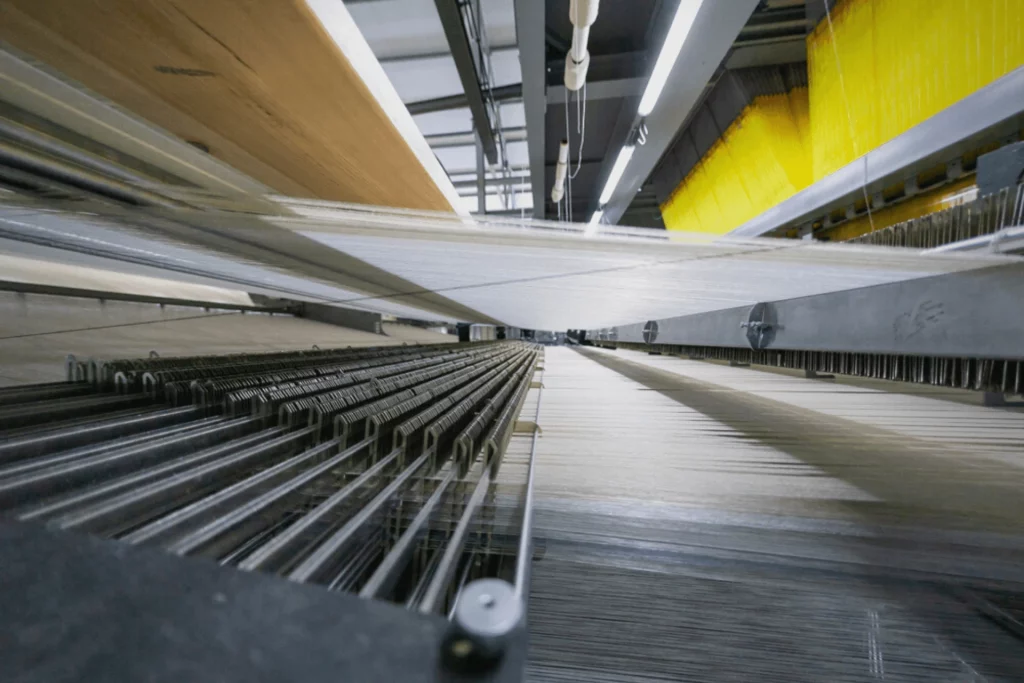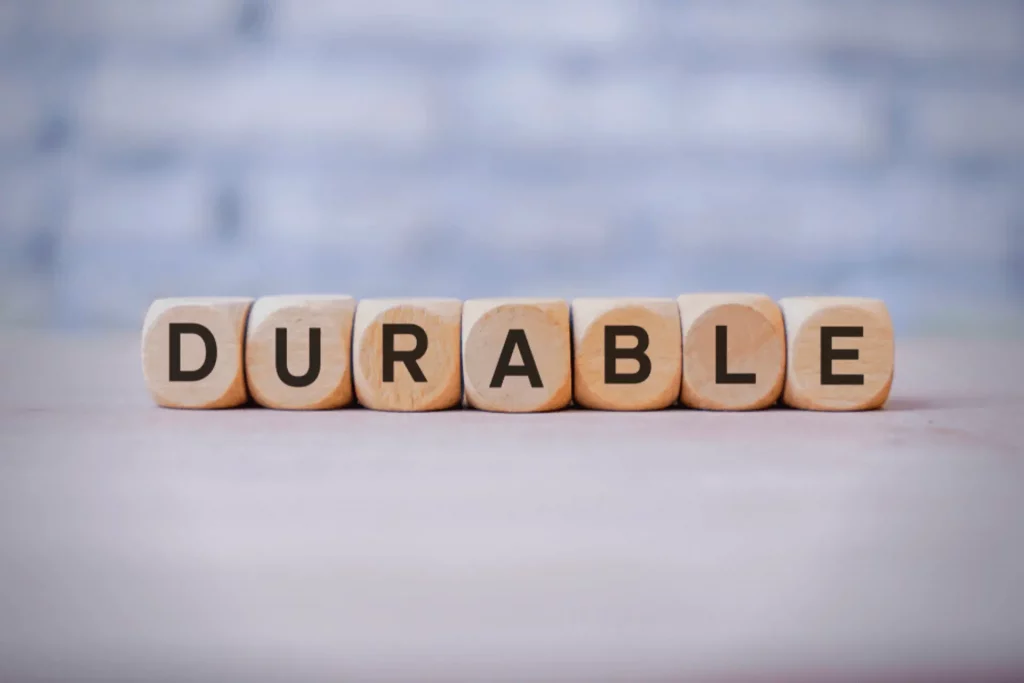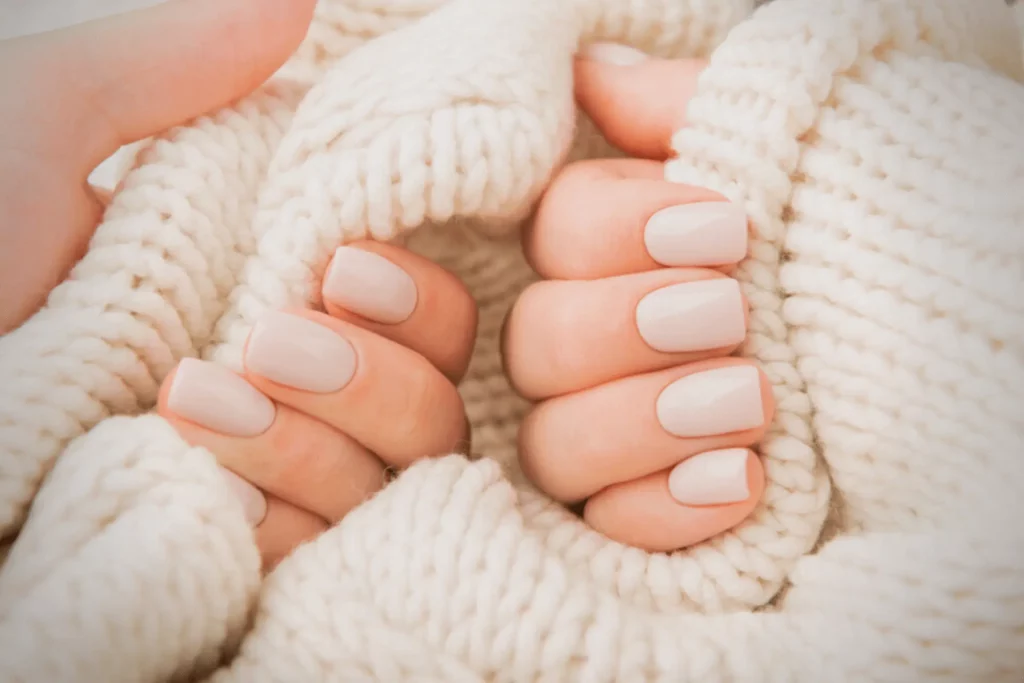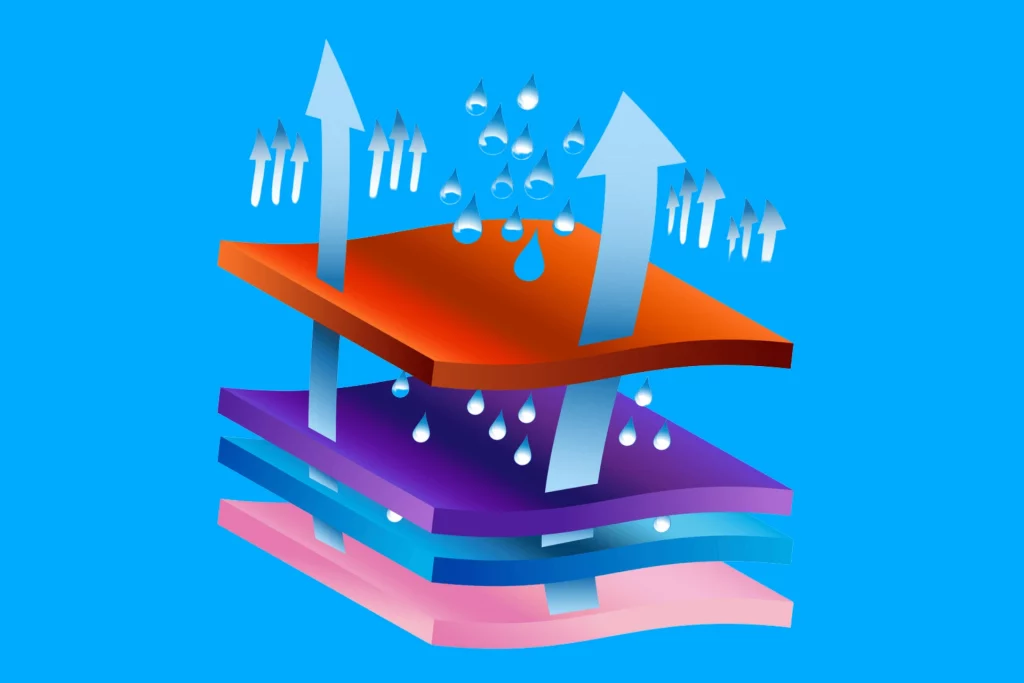To prepare for chilly weather, you should consider wearing both insulating and lightweight textiles. Fleece and merino wool are two of the most common fabrics used in clothing. The most appropriate fabric for winter apparel is determined by the weather conditions you anticipate, the activities you engage in, and your preferences and needs.
This tutorial explains the distinctions between fleece and Merino wool and the advantages and disadvantages of each material type. The next sections will discuss heat, lightness, ventilation, insulation from the weather conditions, comfort, flexibility, and cost, among other things.
It applies to all types of fleece and merino wool clothing and kit, especially coats, gloves, hats, base layers, comforters, and other clothing and gear items. The most significant distinction between fleece and merino wool is the components from which the garments are manufactured.
Natural fabric is Wool instead of synthetic fabric, such as fleece. Fleece may be thought of as a synthetic equivalent of Wool. The manufacturing procedures utilized to create the two textiles are opposed to one another.
This distinction impacts the performance of both textiles under various situations. Both of these textiles are effective in keeping you warm in chilly weather. One may perform better than the other under specific conditions. You could favor one type of material over another. Hopefully, this advice will assist you in determining whether Wool or fleece is the preferable material for you.
Table of Contents
What is Merino Wool?

Merino wool is a kind of Wool harvested from the coats of Merino sheep and is used for clothing. Wool is a natural fabric renowned for its softness, and it is incredibly fine in texture.
In contrast to conventional Wool, which is infamous for irritation, merino wool is one of the smoothest varieties of Wool and does not irritate the skin when worn. As a result of the tiny diameter of the fine merino fibers, the garment is less scratchy due to its greater flexibility and pliability.
Merino wool is regarded as a premium material. It is commonly used in sweaters, socks, and outdoor wear because of its moisture-wicking, odor-resistant and breathable properties.
Benefits of Merino Wool
Merino wool has several advantageous characteristics, including the following:
- This is a natural fiber.
- Warm.
- Breathable.
- Moisture-wicking.
Wool is a natural material that is both environmentally friendly and long-lasting. Being environmentally friendly is significant for folks who dress in eco-friendly fabrics.
Drawbacks of Merino Wool
Like every other material, Wool has advantages and disadvantages, which causes some people to avoid it. Some of the disadvantages are as follows:
- Merino Wool requires greater attention.
- In comparison to other textiles, it is more pricey.
Another characteristic of Wool that has not been previously highlighted is that it is not vegan-friendly. Even though no animals are injured throughout the wool-gathering procedure, the wool comes from animals. As a result, some people choose plant-based or synthetic textiles over Wool in their clothing.
What is Fleece?

Fleece is a type of synthetic material. It is manufactured in a factory by humans. It is not derived from natural plant or animal fibers such as Wool or cotton.
Polyester is used to create fleece. Polyethylene is a form of plastic that is generated from petroleum and a variety of chemical sources. Polyethylene terephthalate (PET) is the most often utilized form of polyester in the production of fleece (PET). The vast majority of fleece is composed entirely of polyester.
A combination of fibers may create several different types of fleece. It is possible to utilize both synthetic and natural fibers. Polyester and cotton blends, rayon, spandex, Wool, or recycled materials like plastic bottles can all be used to create fleece.
The fleece has varying qualities depending on which fibers are used to blend with the polyester—for example, combining polyester and spandex results in an elastic fleece fabric that is ideal for activewear applications. Polyester and cotton fibers are frequently used to construct fleece linings for jackets and pants to keep them warm and comfortable.
Polyester fibers are spun into yarn in the course of the remanufacturing procedure. After that, the yarn is firmly woven together to form a fleece cloth. After that, the cloth is brushed.
The brushing process achieved a characteristic soft and fuzzy texture, which is unique to fleece. It also adds volume to the fabric’s appearance. The fleece’s insulating properties are improved due to the additional volume.
The texture of the fleece might vary depending on how the fleece is manufactured due to minor differences in the production process. For example, fleece may be thin and fluffy or thick and matted in texture, depending on the manufacturer.
A variety of names refers to different varieties of fleece. Sherpa fleece is composed entirely of polyester, and it is quite warm. It has a fuzzily textured surface.
It is frequently utilized in the production of jacket linings and headgear. Polar fleece is a form of fleece thicker than other types of fleece. Jackets and blankets are two of the most typical items made from them.
Fleece was created to mimic the appearance of Wool. In other words, it is an artificial imitation of the natural fiber wool. It was first launched around 1974.
It is often used in the production of coats, jackets and pants liners, caps, gloves, scarves, and blankets, among other things. Fleece is also referred to as polar fleece in some circles.
Fleece is available in a variety of “weights.” The density or loft of the fleece is referred to as the weight of the fleece. The Polartec 100, 200, and 300 scales are used by most businesses to measure weight. The greater the number, the denser, warmer, and thicker the fleece!
The number on the label represents the weight of the fabric in grams per square meter. For instance, 100 weight fleece weights 100 grams per square meter of fabric and is polyester.
Benefits of Fleece:
- Cheaper.
- It dries more quickly.
- It’s less difficult to take care of.
- Lightweight.
In addition to being a vegan fabric, fleece is a fantastic alternative to Wool for individuals who wish to wear a warm fabric that does not include any animal products.
Drawbacks of Fleece:
There are various disadvantages to using fleece that encourage some individuals to prefer Wool instead. Some of the disadvantages of fleece include the fact that it is:
- Synthetic.
- Not as warm as Merino wool
- Not as breathable as Merino wool.
The Differences Between Merino Wool and Fleece:
How well do you understand the distinction between merino wool and fleece? Most people aren’t aware of this disparity, but it’s critical to be aware of it while shopping for winter clothing. As we will see in greater detail below, Wool is an animal-derived natural fiber that originates from sheep, whereas fleece is manufactured from artificial components.
Fleece vs. Merino wool: Durability

In general, fleece outlasts Wool since it is constructed of synthetic components rather than animal hides. When it comes to synthetic textiles, one of the main advantages is that they are designed to be sturdy and long-lasting.
The fibers are extremely robust and don’t break when stretched. They don’t usually require much extra attention to keep them in their optimum condition.
On the other hand, Merino wool is extremely durable if properly cared for. Compared to other natural fabrics such as cotton and silk, it is a sturdy fabric with a longer life expectancy.
Even though the fibers are extremely flexible and difficult to break, Wool can lose some of its characteristics over time if not properly cared for.
The fact that fleece is synthetic provides it with a modest edge over Wool in terms of reliability. If you’re seeking winter clothes that will get a lot of use, fleece is a better choice than other materials.
Fleece vs. Merino Wool: Breathability
Fabrics meant to keep you warm should also have some amount of breathability for you to remain comfortably warm and cozy. Wool and fleece are both known to be extremely breathable materials.
Keep in mind that Wool is a natural material, which means it is somewhat more breathable than fleece in comparison. Wool was initially used as an animal’s coat and required excellent air circulation between the strands.
Because there are many various varieties of fleece fabric woven in various ways, some of them seem to be more breathable than others, depending on their weave. For example, depending on how sherpa fleece is utilized to make garments, it may occasionally seem suffocatingly warm.
To make it more durable, Merino Wool can be treated with chemicals, such as flame retardants or waterproofing. This reduces the fabric’s breathability since air cannot permeate the fibers as easily as before. Wool has a minor edge over other fabrics when it comes to breathability.
Fleece vs. Merino Wool: Softness

Fleece can have a variety of textures depending on the materials used to make it. However, the texture of fleece is often softer than that of Wool.
Some forms of fleece can even have a similar feel to cotton in terms of feel. This is one of the reasons why fleece is such a good lining for clothing. This product feels gentle on your skin and is generally not irritating.
Merino Wool might feel thick and irritating at times, especially after some time. A large part of this is due to the inherent texture of the fibers, which cannot be altered in any way. The weight of the Wool contributes significantly to the denseness of the texture.
A substance known as lanolin is found in almost all types of Wool, and it can cause allergic reactions in certain people. Even though Wool feels lovely, being allergic to it can cause irritation and discomfort in the skin.
However, because Wool may be derived from various animals, certain types are softer than others. Cashmere, for example, is one of the softest wools available and will not feel as thick and irritating as other Wool.
The alpaca fiber is also a luxuriously soft wool fabric. Because it does not contain lanolin, it may be used by persons who are allergic to Wool or otherwise unable to wear Wool. However, it is crucial to remember that softer and higher-quality Wool can be more expensive than cheaper Wool.
Fleece vs. Merino Wool: Weight
Merino Wool is significantly heavier than fleece in terms of weight. That is another reason why it is beneficial in keeping you warm. Heavier materials have a stronger ability to trap warm air.
In contrast, if it is heavy while dry, it will become considerably heavier after it becomes wet. That’s not ideal because we’ve just discovered that Wool takes longer to dry than other materials.
Because it is made of synthetic materials, fleece is a lightweight fabric. The fluffy structure of fleece provides the majority of the warmth rather than the weight of the material. Because of its low weight, fleece has a little disadvantage in providing warmth.
On the other hand, certain people dislike heavy textiles since they make them feel uneasy. These individuals may prefer the lightweight feel of fleece over the heavyweight of Wool if they fall into this category.
Fleece vs. Merino Wool: Warmth

Merino Wool’s initial purpose was to keep animals warm, and as a result, it possesses inherent insulation capabilities. Wool is somewhat warmer than fleece as a result of this. Wool is commonly used in thick winter jackets because it is a good insulator, especially in colder locations where it may become quite cold.
The disadvantage of Wool in terms of warming is that it is only warm if dry, which is not always the case. Rain, snow, and other environmental variables can cause the fabric to become saturated. It takes longer for the cloth to dry than fleece. Being drenched in chilly weather would not keep you warm at all.
Fleece is warm, although it does not have the same inherent warmth as Wool. In the event of soaking, the benefit of fleece is that it will dry significantly faster than
Wool compared to Wool. Synthetic material with a poor water absorption rate is the reason behind this. That implies that fleece will keep you warmer than Wool if you get wet.
Each of these textiles has its own set of advantages. However, before venturing out on a brisk day, think about the activities you’ll be participating in as well as the weather.
If the weather is chilly and damp, and you plan to spend a lot of time outside, a fleece jacket may be a better alternative for you. On the other hand, Wool will keep you warmer than fleece if the weather is chilly but dry.
Fleece vs. Merino Wool: Ease of Care
Fleece is low maintenance, requiring no additional treatment or detergents to keep it looking good. Care for it is extremely simple; you may wash it in the washer with your other items if you want to.
The only thing that should be avoided while working with fleece is utilizing excessive heat. When subjected to high temperatures, synthetic fibers might become degraded. The fibers may even melt, which will destroy the texture of the cloth.
Hand-washing merino wool cloth is the most effective method of caring for it. When washing by hand, it is best to use lukewarm water and a light detergent, such as one specifically designed for Wool. Be cautious not to wring out all of the water from the cloth. Instead, gently squeeze the liquid out of the tube.
When drying Wool, make sure it is laid out on a flat surface. It is not recommended to hang it to dry since it will lose its form. Wool should never be dried in the dryer since it tends to shrink.
Bleach should also be avoided while dealing with Wool because the chemicals are too harsh for the fibers. If you have knit wool textiles, such as sweaters, you should fold them rather than hang them to prevent them from stretching out.
Fleece vs. Merino Wool: Moisture Wicking

Both fleece and merino wool perform best when it comes to moisture resistance. Natural fibers derived from animals, such as Wool, have a strong water repellency, which helps to keep the animals dry. As long as the Wool does not become soaked, it should perform an excellent job of wicking away excess moisture.
Additionally, fleece is moisture-wicking because it does not retain much moisture. It is possible to utilize fleece as an inside layer of clothing, and even if the exterior fabric becomes wet, the inner fleece covering will remain relatively dry. It’s important to remember that it will dry rapidly even if the fleece becomes soaked.
You can’t go wrong with either fabric when it comes to its ability to wick away excess moisture. When determining what to dress, bear in mind your planned activities and the current weather conditions.
Fleece vs. Merino Wool: Price
Merino Wool is more costly than fleece, as you might expect. This is because animals that generate Wool can only be sheared once a year to maintain their wool production.
Therefore, the supply of Wool is reduced, and the production of Wool is more difficult, resulting in increased prices for the product. In addition, rarer forms of Wool, like qiviut, cashmere, and alpaca, will cost more and are among the most costly materials available on the market today.
On the other hand, Fleece is less expensive since it is synthetic. Because it is artificial, it is also less difficult to manufacture. All that is required to produce fleece is a sequence of chemical processes. All of these variables contribute to the reduced overall cost.
Fleece vs. Merino Wool: Uses
Merino Wool and fleece are used in various ways that are quite similar. In both cases, they are utilized for apparel intended to be used in cold weather. Blankets, scarves, jackets, and socks are just a few instances of what they’re employed for in various situations.
Merino Wool may also be used to manufacture sweaters, and fleece can be worn on its own or as a liner beneath other materials, such as denim jackets, to keep them warm.
The most significant distinction between fleece and Wool is that fleece is more commonly used for performance clothing, while Wool is more commonly used for casual or business clothes such as suits and slacks.
Frequently Asked Questions:
Is merino wool preferable to fleece in terms of quality?
In the absence of rain or wind, both fleece and Wool are excellent heat-retention materials. Because it includes lanolin, a natural water repellent, wools such as Merino give higher insulation when caught in the rain, at least initially. On the other hand, Wool takes a long time to dry after being soaked.
Is fleece more or less warm than merino wool?
Nature’s supreme fiber is merino wool; down insulation provides unsurpassed warmth, and fleece provides both warmth and adaptability.
Is fleece an appropriate base layer?
Fleece is an enchanted substance in and of itself. It’s not going to be a decent foundation layer. While it comes to milder wear or an additional insulation layer for your 2nd or 3rd layer when layering for the great outdoors, it’s still a terrific choice. Fleece is also breathable, and it will provide some resistance to wind and water when worn properly.
Is fleece a durable material?
The simple act of wearing and cleaning fleece causes hundreds and millions of these plastic strands to be shed, which wind up in nature, including the air we breathe.
Wrapping it Up:
I hope you find my guide on finding the difference between merino wool and fleece to be of use! There are advantages and disadvantages to each, so if you have to choose between the two, it comes down to a question of personal taste. On the other hand, both textiles will normally keep you quite warm and dry, and they will last a long time if you take good care of them.

![Fleece Vs. Merino Wool: Which Mid Layer is Better? [2023] Fleece vs. merino Wool](https://cottoncashmereandwool.com/wp-content/uploads/2022/02/Fleece-vs-merino-Wool-768x512.jpg)